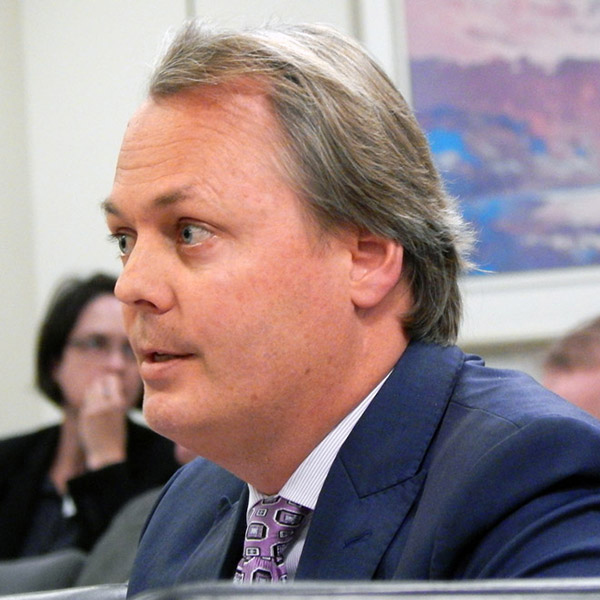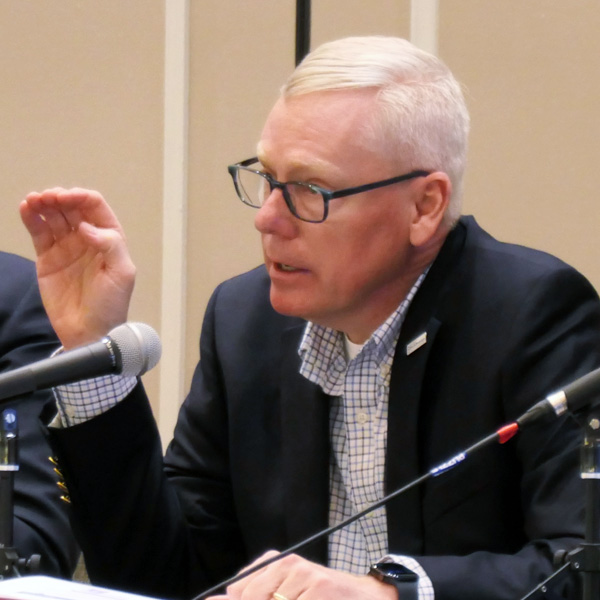New Jersey’s Board of Public Utilities (BPU) needs to enhance and more sharply target its Storage Incentive Program (SIP) if the agency wants to stimulate development in historically polluted, overburdened communities, speakers at a public hearing said Monday.
The SIP cites a program goal of supporting overburdened communities with storage projects that provide “energy resilience, environmental improvement and economic opportunity benefits.”
The goal is one of seven in the SIP proposal. It suggests that placing storage resources in overburdened communities would provide benefits, such as enhanced resilience, while reducing emissions and offsetting the use of backup generation options such as peaker plants during emergency conditions.
But several speakers in the three-hour forum, which attracted more than 250 registrants and more than two dozen speakers, said the program needs to provide larger, and more directed, incentives if it is to bring the benefits of distributed storage to low-income and minority areas that have long suffered the scars of polluting plants and excessive emissions.
Ted Ko, a consultant to clean energy companies, said it’s “not sufficient” to simply incentivize the location of storage projects in the communities.
“While there’s a good reason to actually have deployment incentives to get people to deploy in those locations, it’s not enough to actually get the benefits to those locations,” he said. Instead, he added, the BPU “needs to come with a companion program, to actually get the storage to operate in a way that actually provides those benefits,” which he said could include providing resilience to the electricity system or avoiding the extra emissions unleashed when demand peaks occur.
Scott Elias, director of Mid-Atlantic state affairs for the Solar Energy Industries Association, urged the BPU to set aside a portion of the incentives for projects “located in or directly serving overburdened communities.”
“Our preference is that is done by establishing an adder of $1/kWh to the fixed portion of the incentive” allocated to projects in overburdened areas, he said.
Defining Incentive Capacity
The hearing — the third and final forum to solicit stakeholder input on the proposal — focused on program rules designed to stimulate the development of storage for distributed, or behind-the-meter, projects. The first hearing focused on providing an overview of the project and the second on the program rules for grid-scale projects. (See Stakeholders: NJ Storage Incentives Too Small, Slow.)
The program, with a target of building 1,000 MW of four-hour-plus storage by 2030, is part of the state’s effort to jumpstart state storage development in pursuit of the state goal of creating 2,000 MW of storage by 2030. The state has about 500 MW in place and is hoping to develop 1,000 MW through the Competitive Solar Incentive (CSI) program, which includes incentives for co-located storage.
With different rules for distributed and utility-scale projects, SIP provides incentives to both project categories through a combination of fixed incentives and a pay-for-performance mechanism. For distributed storage, the pay-for-performance payments would be administrated by electric distribution companies (EDC), which would pay “based on the successful injection of power into the distribution system when called upon by the EDC,” according to the proposal.
It would award capacity and incentives to distributed storage projects in blocks, allocating 9 MW of planned capacity in the first year, 10 MW in the second year and 15 MW in the third year. Combined they total about one-quarter of the capacity incentivized in awards to grid-scale projects under the program. Two speakers questioned the imbalance and suggested that more should be allocated to stimulate the development of distributed projects, which include residential and commercial projects competing for the same pot of incentives.
“Without any cap on project size, a single large commercial energy storage can eat up the entire capacity,” said Elias. Without increasing the capacity available, he said, it is “critical that the BPU separate capacity buckets for residential and nonresidential distributed projects, which will add to additional program complexity.”
Available Incentive Capacity
Competing demands for limited incentives prompted other speakers to express concern that insufficient capacity would hurt efforts to support overburdened communities.
John Rotolo, chief engineer for the Newark-based Passaic Valley Sewerage Commission, called the proposed incentive capacity “insufficient” and urged the BPU to increase the program capacity and “make the majority the capacity available to distributed storage projects,” such as those planned at his own agency.
The commission, which operates the largest sewage treatment plant in New Jersey, serves 48 municipalities and is situated in an overburdened community that has a “strong desire to minimize fossil fuel emissions.” During Superstorm Sandy, the commission lost power and could not treat sewage, which resulted in “hundreds of millions of gallons of raw and partially treated sewage” being released into the Passaic River and Newark Bay, Rotolo said.
The agency is in the process of evaluating responses to a request for proposals to develop a clean energy source that would tie in to a microgrid that in several of the proposals would be supported by storage, he said. The plan would require about 34 MW of storage, which would provide enough power to operate the facility during an outage, Rotolo said.
“We are concerned that the storage proposal does not provide enough incentive program capacity even for our single project, let alone the main vital resiliency projects I’m sure are being planned or already processed around the state,” he said.
Todd Olinsky-Paul, senior project director at Clean Energy States Alliance, said that to have a positive impact on overburdened communities, the BPU had to do more than just create a “carve out,” or allocation of incentives to those areas. He cited the example of California’s Self-Generation Incentive Program (SGIP), which provides storage incentives to residents that live in low-income or affordable housing. The program initially had a carveout but offered no “adders” or extra incentives to pay for storage in low-income housing and its residents, he said.
“There was absolutely no uptake until they increased the incentive rate, at which time the equity budget was fully subscribed almost immediately,” he said. “So, we recommend that the New Jersey BPU adopt both a separate capacity block and an additional upfront incentive for overburdened communities. The upfront incentive is important to help offset higher costs and also higher risks of financing.”
Kyle Wallace — vice president for public policy and government affairs at PosiGen, a Livingston-based developer of solar projects for disadvantaged consumers — said the BPU should have a separate allocation of incentives for overburdened communities to help address the fact that the distinct challenges and costs faced by projects catering to those communities mean that the market for them will take longer to develop.
He added that low-income applicants should be paid the full incentive upfront, rather than over 10 years, because those consumers are less able to handle the financial commitment from having an investment tied up long term on a solar project, let alone an additional storage project.
“They don’t have that same tolerance that higher-income households may, where they’re willing to put off their payback period a few more years to add storage,” he said. “Low-income customers just do not have that luxury.”
Other speakers encouraged the BPU to consider ways in which the program can encourage the use of vehicle batteries to provide storage when they are not powering the vehicle, a strategy that is not incorporated into the SIP.
“We want to make sure the BPU storage program can support the full range of applications and use cases, including cases where storage is embedded as part of a broader project, for instance solar and EV charging,” said Pamela Frank, CEO of ChargEVC-NJ, a nonprofit trade and research organization that promotes electric vehicle use. “Electric vehicles in particular, when they’re not operating on the roads, which is the majority of time, they present opportunities to utilize the car battery.”
Stanislav Jaracz, president of the New Jersey Electric Vehicle Association, said that moving in that direction would require a clear statement of intent from the BPU. Vehicles currently are not wired to be bi-directional, and manufacturers won’t move in that direction unless they see a market for it, he said.
“I think it’s very important that we in New Jersey start ahead and have this regulation in place so that we send the message to the carmakers, so that they make the vehicles capable of having bidirectional chargers,” he said.
 Tyson Slocum, of Public Citizen | © RTO Insider LLC
Tyson Slocum, of Public Citizen | © RTO Insider LLC



